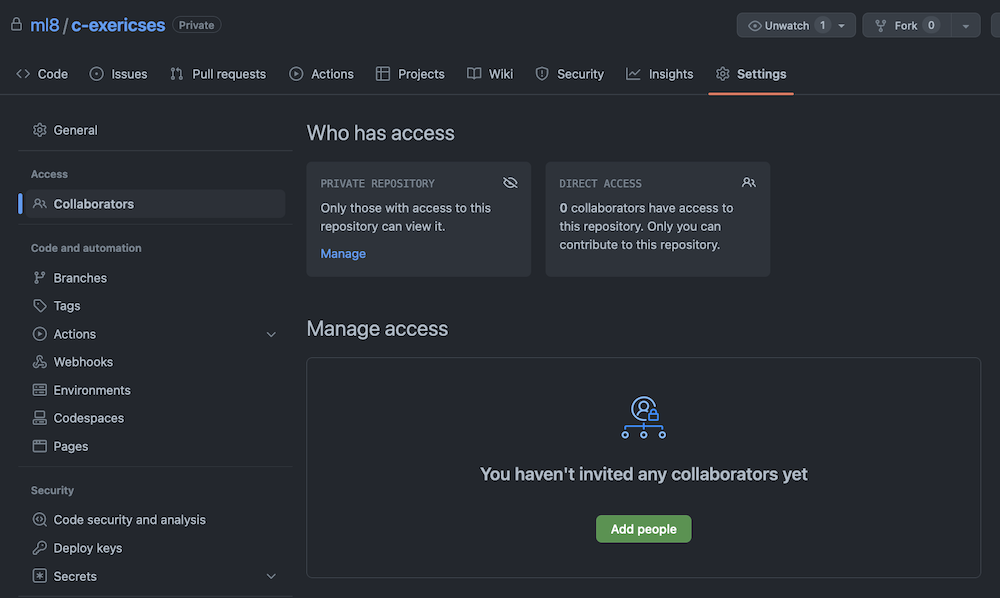Building a Portfolio
One goal that I have for this class is for you to get more experience programming. You should leave this class feeling comfortable writing short programs in C.
A secondary goal that I have is for you to be prepared to apply for internships and jobs post-graduation. When applying for these positions, having a portfolio of work that you can share will be important, as it gives evidence for the claims that you make on your resume.
To achieve this goal, you will be writing at least one small program per week, starting after lab 0.
The practice of programming
Have you ever played a competitive sport? Learned a musical instrument? If so, you are familiar with the importance of practice. When you practice, you take the theory and abstract principles that you have learned and you apply them, over and over.
By design, practice is an instantiation of the learning cycle. When you practice, you expect to struggle, fail, and learn from your mistakes. Eventually, you perfect some skill through repetition of this process. And, even when you have perfected the skill, you continue to practice it in order to maintain the level of skill that you achieved..
If you aim to be skilled at any sport or art, you expect that extensive practice will be part of the process. Programming is no different.
So if our goal is to prepare you to be able to program, practice is necessarily a part of this preparation.
Code katas
We will practice programming through a series of programming problems, similar to what you might expect to see in an interview. None of them will be particularly algorithmically challenging. The act of solving these types of problems is commonly called “code katas”–borrowing the idea of small exercises to practice and perfect movements in martial arts.
The concept was introduced in a classic software engineering book “The Pragmatic Programmer” and is a common way of learning a programming language. Here’s a few examples:
- codekata.com site
- Awesome Katas repo
- Coding Dojo katas
- A curated list of katas
The assignment
I will assign one programming exercise per week, starting after the first lab.
You will use these assignments to build a portfolio in the form of a GitHub repository.
When the first exercise is assigned, you will follow this process to set up and initialize your repository.
-
Create a private GitHub repository.
- Name your repository “c-exercises”.
- Use the
.gitignoretemplate for C. - Check the button to add a README file.
-
From the repository page, click on Settings, then Collaborators (see image screenshot below).
- Add me (@ml8) and the course TAs as collaborators. We should be given the “Maintain” role.

-
Clone the repository on lily.
git clone <your repo url>
-
When an exercise is assigned, create a new branch for the exercise.
-
Turn the exercise in by creating a pull request.
Code reviews
Given the size of this class and the number of exercises, it is infeasible to give a detailed code review for each exercise.
Though each assignment will be graded, you will do at least two face-to-face code reviews with me this semester: once before the midterm and once afterward.
You can choose the assignment that we review one-on-one and you will create an office hours appointment for us to go through your code. You must do this twice.
Rubric
-
Each assignment will be graded on a scale of 1-5:
Score Meaning 1 You turned in the assignment 2 You turned in code that compiles but has several major flaws 3 Your code is mostly correct but has a major flaw 4 Your code is mostly correct and may have a minor flaw or is does not meet readability standards 5 Your code is correct and meets readability standards -
At the end of the semester, each missing one-on-one session deducts 50% from the total grade for all exercises.
After the semester
After the semester, you can (and should!) make your repository public. Spend some time cleaning up your code and the aesthetics of the repository. Work on your README to describe the overall repository and link to each exercise. Make a GitHub pages site for your work. Congratulations! You have a portfolio!
Note that you may not make your lab assignment repositories public. You can, however, add a note in your portfolio that you have other examples of your work from this course available to recruiters upon request. This strategy has been successful for students in my COMP385: Distributed Systems course in the past.